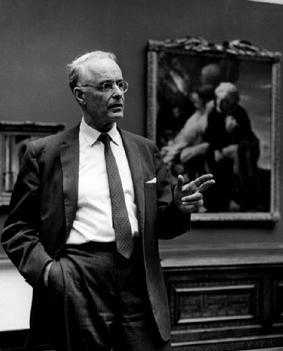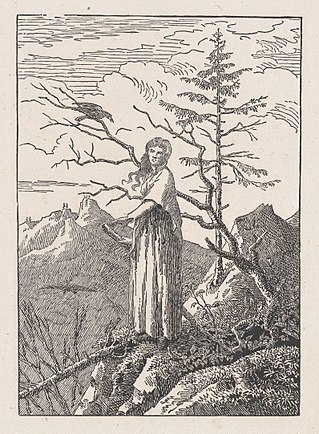Early life and education
Son of the Vienna-born American painter Henry Koerner,Joseph Koerner was raised in the Squirrel Hill area of Pittsburgh,Pennsylvania,and in Vienna,Austria. He graduated from Taylor Allderdice High School in 1976. [2] He attended Yale University where he received his B.A. in history in 1980. His senior thesis,published in German by Suhrkamp Verlag in 1983 with the title Die Suche nach dem Labyrinth ("In Quest of the Labyrinth"),treated the myth of Daedalus and Icarus from Ancient Greek art and literature through James Joyce,with chapters on Ben Jonson,John Milton,and John Keats. An early deconstructive analysis of literary history,the book argued that the story of Daedalus's maze,and the escape from the maze by flight,concerned the problem of time as understood existentially and aesthetically. At Yale he worked for four years as research assistant for historian Peter Gay while Gay was writing his biography of Sigmund Freud and training to be a lay analyst.
Receiving in 1980 a Mellon Fellowship for study at Clare College,Cambridge,Koerner earned a Master of Arts in English Literature. Supervised by Frank Kermode,he wrote a (M.A.) dissertation on Joyce's Finnegans Wake. On a one-year fellowship from the Deutscher Akademische Austauschdienst (1982–1983),he studied philosophy and German literature at Heidelberg University with Hans-Georg Gadamer and Peter Pfaff. Work undertaken at Yale and Cambridge on Caspar David Friedrich,and influenced by a friendship with Frank Schirrmacher,on the German historical tradition shifted Koerner's focus to the history of German art. He received an M.A. (1985) and Ph.D. in art history at the University of California,Berkeley,in 1988. His dissertation on self-portraiture in the German Renaissance was advised by Svetlana Alpers,James Marrow,and Stephen Greenblatt.
Career
Koerner developed his characteristic technique most extensively in the opening chapters of his first art history book,Caspar David Friedrich and the Subject of Landscape (1990,Winner of the 1992 Mitchell Prize),written while the author was a Junior Fellow at Harvard's Society of Fellows. [3] At Berkeley,Koerner began an association with the journal RES:Anthropology and Aesthetics,where he published numerous articles and editorials and served (since 1990) as Associate Editor. During this period,Koerner was also a member of the research group Poetik und Hermeneutik in Konstanz in its later phase,1987–1994,writing on the themes of festival and contingency,or accident.
Caspar David Friedrich and the Subject of Landscape became the third volume of Koerner's trilogy on German art. The first volume,The Moment of Self-Portraiture in German Renaissance Art (1993),studied Albrecht Dürer’s self-portraits and their distortion by Dürer’s disciple,Hans Baldung Grien. The second volume,The Reformation of the Image (2004),focussed on works by Lucas Cranach,and treated Protestant iconoclasm and its aftermath in painting and architecture. Among its claims was that,prior to Protestantism,Christian art had iconoclasm built into it,most centrally in the image of the ruined Christ as crossed-out God. While writing the latter book,Koerner collaborated with Bruno Latour and Peter Weibel on the 2002 exhibition "Iconoclash" at the ZKM in Karlsruhe. Subsequently,he curated "Earth Tidings," a collaboration between the ZKM and the Staatliche Kunsthalle Karlsruhe,in conjunction with Latour and Weibel's 2020-21 exhibition "Critical Zones." He also was a contributing curator to ZKM's exhibitions "Making Things Public" (2005) and "Reset Modernity" (2016). [4] Koerner has also curated exhibitions of his father's work,including a 1997 retrospective at the Austrian National Gallery. In the 1990s,he was a frequent contributor to the Frankfurter Allgemeine Zeitung and The New Republic . He has published book and exhibition reviews in The New York Review of Books and creative non-fiction in Granta Magazine,anthologized (2020) in The Best American Essays. He has also written and taught on modern and contemporary artists,including Lucian Freud,Francesco Clemente,Vivienne Koorland,Luc Tuymans,and,most extensively,William Kentridge. He has also published over seventy scholarly articles,including in Critical Inquiry,Representations,October (journal),Word &Image,and The Art Bulletin,where he was Book Review Editor in the 1990s.
In Great Britain,Koerner is known for his work as writer and presenter of the three-part Northern Renaissance (2006) and the feature-length Vienna:City of Dreams (2007),both produced in Scotland by the BBC and first broadcast on BBC Four. A popular speaker,Koerner has delivered the Slade Lectures at Cambridge (2003) and Oxford (2013),the Getty Lectures at USC (2005),the Bross Lectures at University of Chicago (2007),the A. W. Mellon Lectures in the Fine Arts at the National Gallery of Art (2008),the Tanner Lectures on Human Values at Cambridge (2012),the E. H. Gombrich Lectures in the Classical Tradition at the Warburg Institute (2016) and the Linbury Lecture at London's National Gallery (2022). His lectures as the Avenali Chair in the Humanities at U. C. Berkeley (2018) treated Hieronymus Bosch and William Kentridge under the title,borrowed from Kentridge,"Art in a State of Siege." A book of this title treating Bosch,Max Beckmann,Kentridge,with an introduction on Aby Warburg will appear in 2024 at Princeton University Press. Koerner's most recent publications concern the theme of enmity in the art of Bosch,including the book,based on Koerner's Mellon Lectures and widely reviewed,Bosch and Bruegel:From Enemy Painting to Everyday Life (2016). [5] In it,he revisited the dual-artist format of The Moment of Self-Portraiture in German Renaissance Art, although with a different trajectory:from Bosch's artistry specializing in hatred to Pieter Bruegel the Elder's art that predicts a modern ethnographic perspective on the human. Pioneering "a way out of the monograph," this framework accords with his conception of the work of art as "inherently doubled," at once embedded in its historical context and anticipating its later receptions. [6] Koerner's recent work concerns art in extreme states and contemporary debates concerning of monuments, [7] which he is currently pursuing partly in collaboration with Professor Sarah Lewis. [8] [9] Koerner's most recent work,including collaboration on exhibitions on William Blake and Philipp Otto Runge at the Fitzwilliam Museum and Hamburger Kunsthalle,and on Casper David Friedrich at the Metropolitan Museum of Art concern German Romantic art and visual representations of time.
A member of the American Academy of Arts and Sciences (since 1995) and the American Philosophical Society (since 2008), [10] and a Fellow of Society of Antiquaries of London (since 2021),Koerner has served on the boards of the Isabella Stewart Gardner Museum,the Yale University Art Gallery,the Frick Art Reference Library,the Warburg Institute,Ralston College,and the American Academy in Berlin. He received a Guggenheim Fellowship for his research on Reformation art (2006-7) and has served as Visiting Professor at the University of Konstanz (1991) and the Kunsthistorisches Institut in Florenz. In 2009,Koerner was one of three recipients of the Andrew W. Mellon Foundation's Distinguished Achievement Award,which funded an academic and creative project on homemaking (geographic,architectural,and psychic) in Vienna from Otto Wagner to the present day. Based at Harvard,the project produced the 2013 Slade Lectures series "City of Dreams" and the documentary film written,produced,and directed by Koerner,The Burning Child. [11] [12] A new German version of the film will premier in 2024 under the title "Wohnungswanderung" ('Home Wandering'). Koerner has been primary advisor of some twenty-five doctoral dissertations completed at Harvard,the Courtauld Institute,University College London,and Frankfurt University. In 2020 the College Art Association honored him with its 2020 Distinguished Lifetime Achievement Award for Writing on Art. [13] He a member of the Executive Committee of Harvard's Center for Jewish Studies and currently (until 2027) serves as Chair of Harvard's Department of History of Art and Architecture.

















